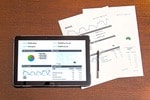
Will FCX Benefit From Tariffs?
Freeport-McMoRan (NYSE:FCX) is among the world’s largest producers of copper…


Freeport-McMoRan (NYSE:FCX) is among the world’s largest producers of copper…

Levi Strauss (NYSE:LEVI) is among the oldest clothing brands in…

If you know popular consumer appliance brands Shark and Ninja,…
Market Cap: $4.2T
P/E Ratio: 58x
Market Cap: $3.8T
P/E Ratio: 43x
Market Cap: $3.1T
P/E Ratio: 35x
SharpLink Gaming [SBET] is down 6.88% over the past day.
Exodus Movement [EXOD] is down 0.79% over the past day.
Volcon [VLCN] is up 210.05% over the past day.